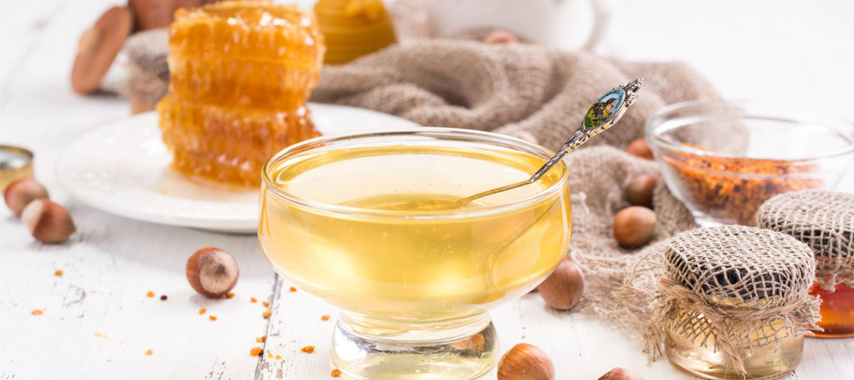

Published on Dec 26th, 2023

The journey from farm to bottle becomes a crucial story at a time when consumers are more conscious of the sources of the food and drinks they consume. Syrups are the sweet elixirs that dress up our sweets and grace our breakfast tables. In this blog post, we delve into the detailed process of tracking the origins of USA syrups. A focus on the critical importance of consumer trust and openness in the broad fields of agriculture and food businesses highlights this investigation.
There's more to the syrup industry than just bottles on the shelves. It's an extensive process that involves farms, harvesting, and syrup production. Imagine it as a puzzle with components representing farming techniques, gathering sap, and preparing that delectable syrup we all enjoy.
Here, we want to simplify the process so you may quickly comprehend how our favorite syrups are made. And what makes this significant? Now, let's examine the process from farm to bottle to see how transparency is essential to developing trust between those who manufacture the syrup and those of us who enjoy adding a touch of sweetness to our food.
Transparency in syrup production cannot be emphasized, as it is the foundation for building confidence between producers and consumers. Investigating syrup origins reveals a world in which going from field to bottle is a story of thoughtful choices and careful practices rather than merely a sequence of procedures.
It's critical to comprehend the origins of ingredients and the processing methods used in syrups. Producers of syrup dedicated to transparency usually provide comprehensive details about the farms, farming techniques, and processing procedures utilized in their goods. This transparency helps to strengthen the relationship between the agricultural community and consumers while boosting consumer confidence.
The journey from farm to bottle is an experience that begins in the broad fields where tapioca plants flourish, and rice paddies swing gently, giving the necessary raw materials for the delicious sweetness of tapioca and rice syrup. Deeply ingrained in agriculture, this first phase is a crucial part of the story of manufacturing organic syrup, revealing a diverse range of ethical and sustainable methods that help create the distinctive qualities of these syrups.
When we discuss farming, we refer to the meticulous planting of seeds. We practice organic agriculture, which maintains the land's health and the crops' organic nature, instead of utilizing many chemicals. At this point in the journey, responsible land management becomes a guiding principle. It encompasses more than just caring for the crops; it also entails maintaining biodiversity, safeguarding natural habitats, and enhancing the ecosystem's health.
A careful balance is needed at this phase to ensure sustainability and the well-being of the trees. The techniques employed to extract sap also significantly impact the quality of the finished product. You can use tubing systems or buckets to collect the liquid. The effort and attention to detail required to transform the liquid into the syrup Customers can appreciate the artistry of turning sap into the delicious syrups that grace our breakfast tables by being aware of these procedures.
Extracting Juice or Sap: When harvesting a plant or tree, use techniques like tapping, chopping, or crushing to obtain the sap or juice. Gather the liquid and store it in containers or a tubing system.
Take the extracted juice or sap to a processing plant. Depending on the output volume, this could include using pipes or loading onto vehicles.
To eliminate contaminants and large particles, strain the raw sap or juice. This stage makes the liquid easier to handle and cleaner for subsequent processing.
Heat the sap or juice in large evaporator pans or equivalent apparatus to eliminate extra water by evaporation. This concentration procedure turns the liquid into syrup by raising the viscosity and sugar content.
Secondary Filtration: To attain the desired consistency of syrup, strain the concentrated liquid to eliminate smaller contaminants.
Adjustments may be made depending on the type of syrup and desired flavor profile.
Test the syrup to make sure it satisfies quality requirements. This could involve measuring the amount of sugar, examining the consistency, and ensuring the flavor is within acceptable parameters.

Distribute the syrup by filling and packaging it in appropriate containers. Bottles, jars, and other food-grade containers are common packing materials.
Put labels on the syrup that specify its grade and type, which may be determined by color, flavor intensity, or purity, among other criteria. This stage establishes the product's quality criteria and aids in consumer decision-making.
Many syrup manufacturers use traceability systems, which let customers follow their syrup's path from farm to bottle, to increase consumer confidence. A brand's dedication to sustainability, ethical behavior, and high standards is demonstrated by its certifications, which include USDA Organic, Fair Trade, and Non-GMO Project Verified. Examining these credentials enables customers to make values-driven decisions with knowledge.
To preserve its quality, store the packaged syrup in the proper environment. Crystallization and other unwanted alterations can be avoided with proper storage.
Delivery: Depending on the production type, ship the packed syrup to stores, wholesalers, or directly to customers.
In summary, tracing the procedure of USA syrups involves visiting the farms, woods, and manufacturing plants where these delicious beverages are produced. The dedication to sustainability, transparency, and certifications gives customers the ability to make decisions that are consistent with their moral principles. By learning about the complex process from farm to bottle, consumers can gain a greater appreciation for the skill and devotion that go into creating the syrups that bring a hint of sweetness into their lives. By persisting in the pursuit of transparency, USA syrup suppliers foster trust and reinforce the connection between their food-producing communities and the general public.
BackBe the first to know about new products, events and offers.